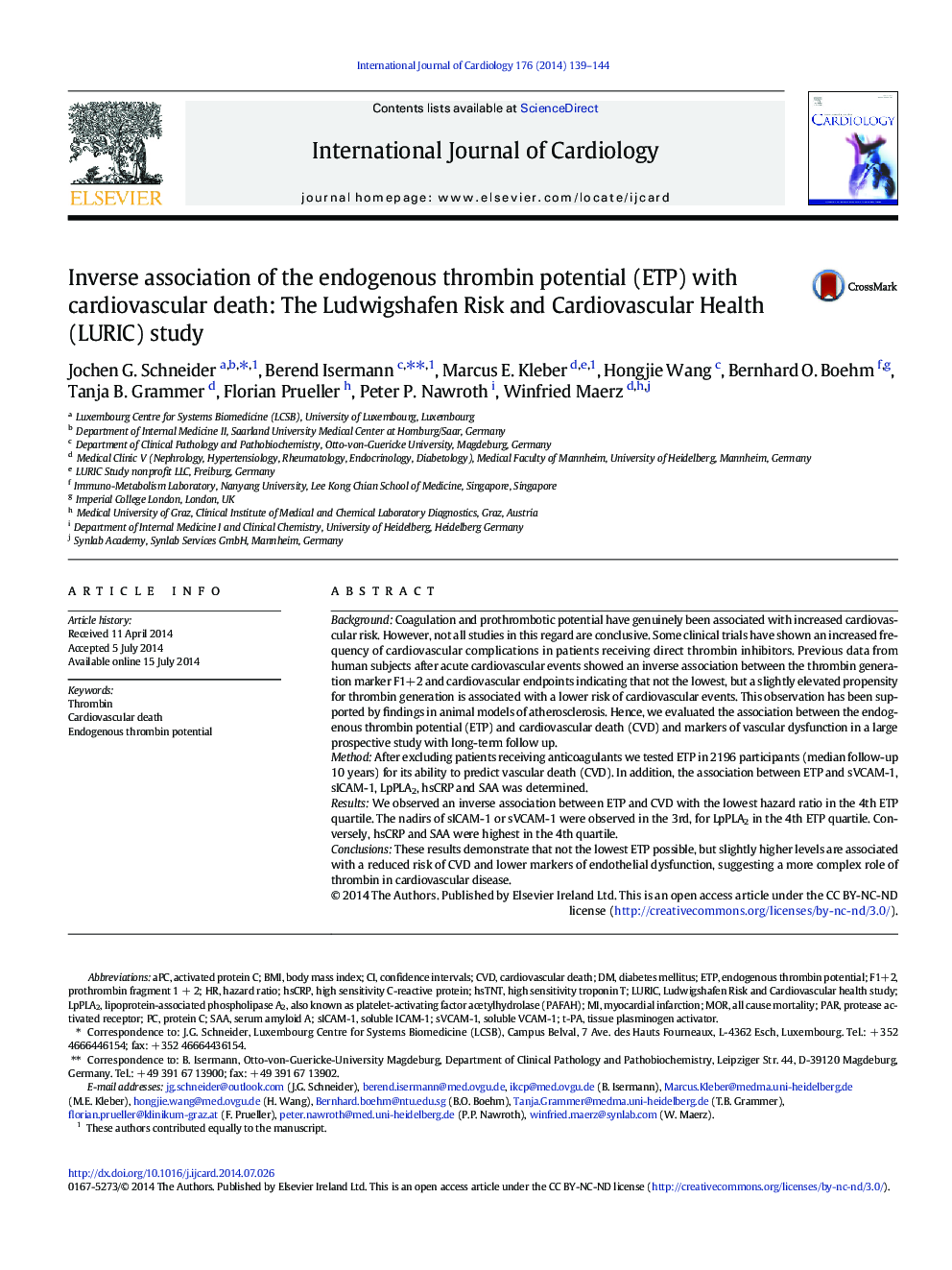| کد مقاله | کد نشریه | سال انتشار | مقاله انگلیسی | نسخه تمام متن |
|---|---|---|---|---|
| 5970662 | 1576180 | 2014 | 6 صفحه PDF | دانلود رایگان |

- ETP was inversely associated with cardiovascular death and endothelial dysfunction.
- Low doses of thrombin may potentially be vasoprotective.
- The increased use of direct thrombin inhibitors should be monitored carefully.
BackgroundCoagulation and prothrombotic potential have genuinely been associated with increased cardiovascular risk. However, not all studies in this regard are conclusive. Some clinical trials have shown an increased frequency of cardiovascular complications in patients receiving direct thrombin inhibitors. Previous data from human subjects after acute cardiovascular events showed an inverse association between the thrombin generation marker F1+2 and cardiovascular endpoints indicating that not the lowest, but a slightly elevated propensity for thrombin generation is associated with a lower risk of cardiovascular events. This observation has been supported by findings in animal models of atherosclerosis. Hence, we evaluated the association between the endogenous thrombin potential (ETP) and cardiovascular death (CVD) and markers of vascular dysfunction in a large prospective study with long-term follow up.MethodAfter excluding patients receiving anticoagulants we tested ETP in 2196 participants (median follow-up 10Â years) for its ability to predict vascular death (CVD). In addition, the association between ETP and sVCAM-1, sICAM-1, LpPLA2, hsCRP and SAA was determined.ResultsWe observed an inverse association between ETP and CVD with the lowest hazard ratio in the 4th ETP quartile. The nadirs of sICAM-1 or sVCAM-1 were observed in the 3rd, for LpPLA2 in the 4th ETP quartile. Conversely, hsCRP and SAA were highest in the 4th quartile.ConclusionsThese results demonstrate that not the lowest ETP possible, but slightly higher levels are associated with a reduced risk of CVD and lower markers of endothelial dysfunction, suggesting a more complex role of thrombin in cardiovascular disease.
Journal: International Journal of Cardiology - Volume 176, Issue 1, September 2014, Pages 139-144